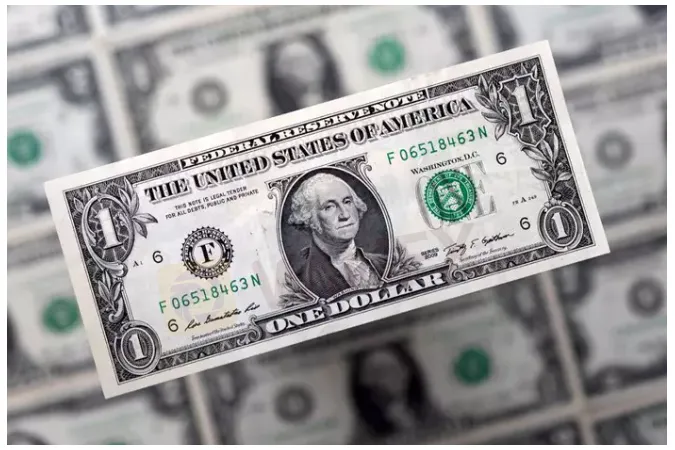简体中文
繁體中文
English
Pусский
日本語
ภาษาไทย
Tiếng Việt
Bahasa Indonesia
Español
हिन्दी
Filippiiniläinen
Français
Deutsch
Português
Türkçe
한국어
العربية
Dollar pauses for breath, eyes best month in a decade
Abstract:The dollar held firm at a 20-year high on Friday and was poised to score its best monthly gain in a decade, buoyed by bets on rising U.S. interest rates and doubts about growth in Europe and China.

It has climbed each week in April, with this weeks rise thanks to the Bank of Japan, which sent the yen falling through 130-per-dollar for the first time since 2002 on Thursday when it reinforced a commitment to its super-low yield policy.
The yen was last at 130.53 per dollar after falling as low as 131.25 on Thursday following the BOJs pledge to buy endless amounts of bonds daily as needed. The yen is down almost 7% in April, its worst month since November 2016.
Thursdays uber-dovish decision set Japan even further apart from the Federal Reserve, where markets are priced for 150 basis points (bps) of hikes in just three meetings, and triggered a fresh rush of funds into the dollar ahead of all else.
The U.S. dollar index, which hit a two-decade high of 103.93 in the wake of the yens tumble, was last at 103.40 and up more than 5.1% through April. If sustained, that would make for its best monthly gain since May 2012.
Weaker-than-expected quarterly U.S. growth data on Thursday proved little obstacle to the dollars rise, and investors hardly adjusted their near-term interest rate bets.
The euro, meanwhile, dropped through $1.05 for the first time in five years on Thursday and was last clinging on at $1.0526. Trade was thinned in the Asia session by a public holiday in Japan.
“Like the yen, the euro is becoming more deeply undervalued against the U.S. dollar,” said MUFG Bank currency analyst Lee Hardman.
“Market participants increasingly price in a widening divergence opening up between the performance of the euro-zone and U.S. economies and subsequently the outlook for European Central Bank and Fed policies.”
The euro has lost almost 5% on the dollar in April and just nearly 7% on the dollar since Russias invasion of Ukraine on Feb. 24.
The conflict, and especially this week‘s halt on Russian gas supplies to Poland and Bulgaria, has investors concerned about Europe’s energy security, inflation and growth.
Similar fears have driven sterling to the 22-month low of $1.2412 it made overnight. At $1.2507 in Asia, the British currency is down almost 5% against the dollar in April, its worst showing since October 2016. [GBP/]
Drawn out COVID-19 lockdowns are also putting the brakes on an already-slowing Chinese economy, which has hit the yuan as well as commodity currencies.
The yuan touched an 18-month low of 6.6520 per dollar before rebounding a bit to 6.6130 as state media reports on a Politburo meeting were seen as an indication the government would roll out more stimulus to meet its growth targets this year.
The currency is on course for a monthly drop of 4.1%, the largest since currency reforms in 1994.
The Australian dollar made a three-month low of $0.7055 overnight before recovering to $0.7152 on Friday as investors think Australias monetary tightening cycle is set to begin as soon as next week.
The Aussie is down 4.4% for April. The New Zealand dollar is heading for its worst month in seven years, having lost nearly 6% on the dollar, rose 0.5% to $0.6523.
Bitcoin held at $39,600.

Disclaimer:
The views in this article only represent the author's personal views, and do not constitute investment advice on this platform. This platform does not guarantee the accuracy, completeness and timeliness of the information in the article, and will not be liable for any loss caused by the use of or reliance on the information in the article.
Read more

BOJ to Announce Policy Decision This Week, Market Bets on a Rate Hike
The yen strengthens past 156 as markets anticipate a rate hike from the Bank of Japan this week.

WikiEXPO 2025 is set to embark on a new global tour
WikiEXPO 2025 is set to embark on a new global tour First station - Hong Kong! Are you ready?

Forex Market Outlook 2025: Institutional Predictions and Trend Analysis
In 2025, the global forex market faces a range of complex macroeconomic and geopolitical challenges. From shifts in U.S. monetary policy to structural issues in Europe’s economy and potential volatility in emerging markets, financial institutions worldwide are offering forecasts for the year ahead. This article compiles insights from leading organizations to explore potential trends and opportunities in the forex industry for 2025.

Singapore Blocks Polymarket Access, Following U.S. and France
Singapore blocks Polymarket over gambling violations. Similar bans in France and the U.S. show growing regulatory scrutiny on decentralized platforms globally.
WikiFX Broker
Latest News
Why More Traders Are Turning to Proprietary Firms for Success
Unlocking the Secrets of Prop Trading: How to Succeed in Proprietary Trading Firms
What the Movie Margin Call Taught Traders About Risk and Timing
Top Forex Brokers for Low-Cost Trading in 2025
Participate Now in ForexCup Trading Championship
Musk team given access to sensitive federal payment system - reports
Trading Opportunities During the Lunar New Year: Forex, Commodities, Stocks
Currency Calculator






